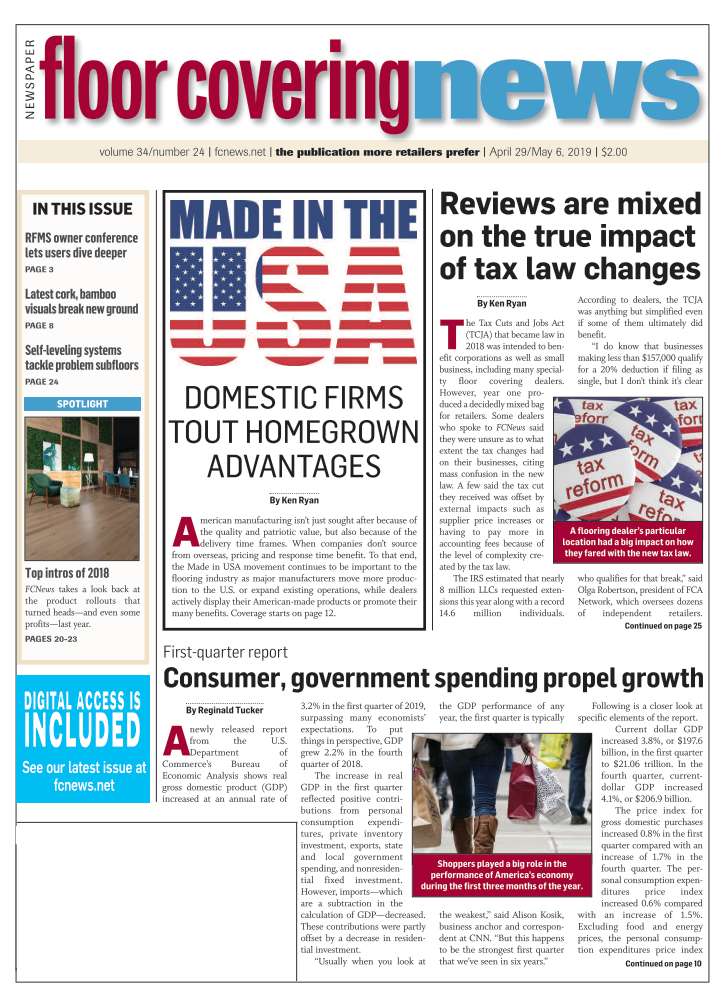April 29/May 6, 2019: Volume 34, Issue 24
By Steven Feldman
 Everybody is talking about millennials. That’s your customer of tomorrow. But for the longest time I’ve been advising against losing sight of your customer of today—the baby boomer, who still controls the lion’s share (roughly 70%) of all the disposable income in this country.
Everybody is talking about millennials. That’s your customer of tomorrow. But for the longest time I’ve been advising against losing sight of your customer of today—the baby boomer, who still controls the lion’s share (roughly 70%) of all the disposable income in this country.
But since so many of us like to look ahead, while you are doing all that research on millennials and their shopping habits, you may want to get yourself acquainted with another important demographic: Generation Z.
This is the year Generation Z becomes the biggest consumer cohort globally, displacing millennials as a top obsession for people trying to figure out how to cash in on their unique shopping, eating and media habits. They make up 26% of the population. Nearly 50% identify themselves as non-white compared to 28% of boomers. While they might still be in school, they have spending power to the tune of $143 billion in the U.S. alone.
Generation Z, roughly between the ages of 8 and 22, were born after the Internet went mainstream and occupy a world where marijuana is going legal in several states. Anything and everything can be delivered to their front door with a swipe of a finger, and they grew up on platforms like Snapchat and Instagram, where the influencer culture has taken hold. Fifty percent say they are connected online at least 10 hours a day, and 70% say they watch more than two hours of YouTube each day.
Here are some broad trends you may want to consider when targeting the Generation Z shopper in the years ahead:
1. They can be influenced. While older millennials graduated college before the rise of Facebook, or even mobile phones, these new consumers live on Instagram and other platforms. In fact, 52% said they primarily find out about new products from social media, a jump of 10 percentage points from millennials and double the rate for their Generation X parents, according to a recent survey by Bloomberg News and Morning Consult.
That means influencers—celebrities or everyday people with big social media followings who are paid to promote products—can have an outsized impact with this group where nearly six out of 10 self-diagnose spending too much time on their phones.
2. They have different vices. Younger consumers are wary of nasty hangovers and eager to wake up on the weekends feeling fresh so they can get outdoors and capture selfies. Beer in particular is going through a slump as Americans cut back on alcohol.
Marijuana, meanwhile, is going mainstream. It’s perceived as healthier than alcohol by many Gen Z consumers and is now legal for adult use in 10 U.S. states. Gen Z consumers are coming of age in a time when the decades of stigma around weed are fading away as more states legalize marijuana. Gen Z in the U.S. is twice as likely to use cannabis than the national average.
3. They don’t have to go to stores. Gen Z could be the first generation to truly embrace online grocery shopping—though maybe not yet. Just 83% of them said they primarily purchase groceries at a physical store compared to 95% of baby boomers. Surveys have also indicated that Amazon is one of the favorite brands of Gen Z consumers, who’ve never lived in a time without the e-commerce giant.
4. They choose their brand loyal- ties carefully. The rise of Gen Z could be bad news for traditional clothing retailers like The Gap and Macy’s, already battered by the shift to buying clothing online. The next generation is also embracing second-hand apparel, which will be bigger than fast fashion within the decade, according to Thredup’s 2019 Resale Report. Thredup, a fashion resale website, says more than one in three Gen Z shoppers will buy used clothing this year vs. less than one in five boomers or Gen X consumers.
They may not be your customer just yet, but they are coming in the next five years.

